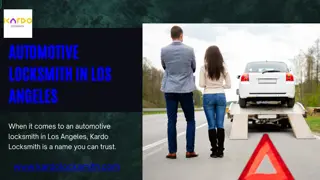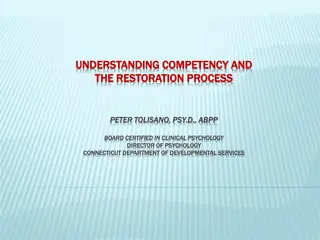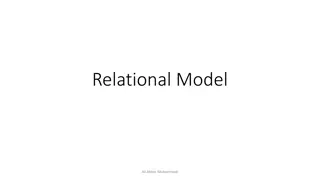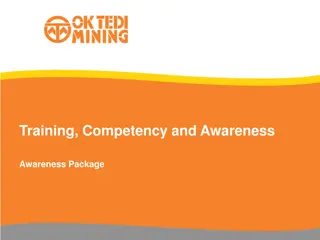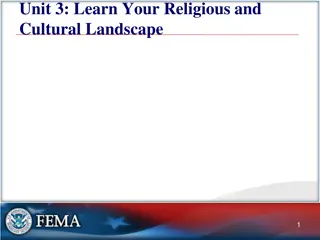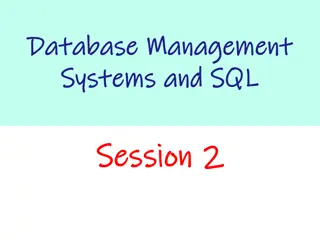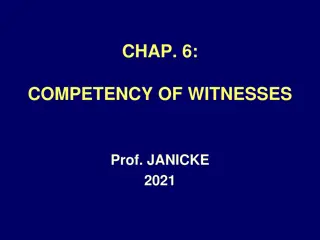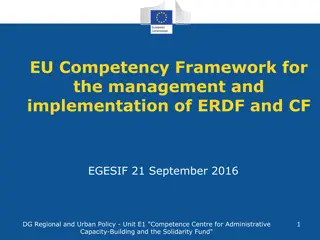Building Change Competency: Keys to Successful Change Management
Discover the importance of building change competency and the keys to successful change management. Explore why change competency is crucial for organizational success, along with strategies for managing change effectively. Learn about different change management approaches and the benefits of a project-centric approach. Gain insights into successful implementation of change management and how to develop the competency to drive change within your organization.
Download Presentation

Please find below an Image/Link to download the presentation.
The content on the website is provided AS IS for your information and personal use only. It may not be sold, licensed, or shared on other websites without obtaining consent from the author. Download presentation by click this link. If you encounter any issues during the download, it is possible that the publisher has removed the file from their server.
E N D
Presentation Transcript
Building Change Competency
Agenda Introductions The importance of Building Change Competency Keys to Successful Change Management Change Management Approaches Key Takeaways Office of Management Services Office of Management Services omspmteam@dbhds.Virginia.gov omspmteam@dbhds.Virginia.gov
Why Change Competency is Important In the coming years, no other competency will be more important to an organization than the ability to manage change. Office of Management Services 3
Keys to building the competency to manage change Sponsorship organizational change or enterprise wide change requires sponsorship at the highest levels in the organization. Structure - building the competency to manage change is both a project and a change. Strategy - the right deployment strategy will be unique for your organization. Office of Management Services 4
What does successful implementation of successful change management look like? Office of Management Services 5
POLL QUESTION Office of Management Services 6
Change Management Approaches This training presents three different approaches for building change management competency along with action steps, pros and cons: Project-centric approach Skill-centric approach Holistic approach Office of Management Services 7
A Project-Centric Approach Is often taken when the originator of the effort wears more of a "project hat" in the organization - such as an experienced project manager, a member of the PMO or a leader overseeing several projects in their own department or organization. This is primarily because the projects in the organization are within this person's scope of influence, hence they drive change management first into the projects within the organization. Office of Management Services 8
High-level Steps Select first wave of projects that will be using change management Certify the project leaders and change managers in change management for the selected projects Train the other change management 'doers' - senior leaders, managers and supervisors Implement change management strategies, follow up, and then decide on the next wave of projects to use change management Office of Management Services 9
Project-Centric Pros and Cons Pros Cons Senior leaders and managers can get bombarded as multiple projects engage them and pull them in different directions Easier to get off the ground Can piggy back on project management experience No economies of scale in building initial foundation and understanding in change management Creates short-term wins that can be leveraged for future change management rollout Not all change that happens in organizations occurs as well-defined projects, and these 'non-project' changes may miss out on change management benefits Office of Management Services 10
A Skill-Centric Approach Is often used when the originator of the effort has a human resources or training background. Many of these efforts originate in HR and are focused on developing the leadership competency to manage change. "Skills" is typically the focus because the originator (for example the director of training) has influence and control in the training part of the organization. Office of Management Services 11
High-level Steps Identify "who needs to know what" through a needs assessment relating to change management - at a minimum project teams, senior leaders and front-line managers and supervisors Align change management into competency models and personal development plans Deliver training to targeted groups Office of Management Services 12
Skill-Centric Pros and Cons Pros Cons Creates the groundwork for individual competencies that ultimately must be evident for the organization to build the competency Competencies are not internalized into core business processes Change management may or may not be utilized on key change projects and initiatives Courses are already developed and ready to rollout, or can be customized with minimal effort Learning change management, without having a specific project to apply the tools, can make it academic and have less impact Integrates all key roles in change management - for instance senior leaders as sponsors and front-line managers as coaches to employees Can become "just another training program" Office of Management Services 13
POLL QUESTION Office of Management Services 14
The Holistic Approach This approach combines the project and skills-centric approaches and addresses the elements of process and structure. It also identifies the below five areas where tactics should be developed to truly improve how the organization reacts to and manages change: Leadership tactics Project tactics Skills tactics Process tactics Structure tactics Office of Management Services 15
What does success look like for each area? Office of Management Services 16
Leadership future state All senior leaders are competent in their role as sponsors of change Each project has an assigned primary sponsor at the right level for that project Senior leaders are active and visible in their sponsorship activities Office of Management Services 17
Project future state All projects are applying change management on a regular basis Project plans and change management plans are fully integrated for each project Office of Management Services 18
Skills future state All change managers are certified in change management All project teams and project support functions are trained in change management All senior leaders consistently demonstrate behaviors of effective change sponsorship All managers and supervisors are trained and competent at managing change with their employees and coaching them through change Office of Management Services 19
Process future state A standard change management methodology is in place Change management and project management processes are both under a process management and continuous improvement program The funding process for new projects accounts for change management risks and requires change management plans Regular reviews are conducted with the leadership team on progress of change management deployment and on Project Portfolio Management results Office of Management Services 20
Structure future state A team is designated for managing the deployment of change management This change management staff group reports to the primary sponsor (as high as possible in the organization, given the enterprise nature of the program) Tools and templates are available throughout organization Project Portfolio Management is part of strategy work for the organization Office of Management Services 21
Holistic Approach Pros and Cons Pros Cons Fully integrated program with highest likelihood of success; leverages leadership commitment to the change Does require more time and resources up front; requires significant leadership presence Office of Management Services 22
POLL QUESTION Office of Management Services 23
Key Takeaways Building competency require sponsorship, structure and strategy A project-centric approach is typically driven by a project manager or a PMO. By applying change management to a handful of projects they begin to drive change management within the organization A skill-centric approach is typically driven by a training or HR focused individual. They approach organizational change management as a development need for senior leaders and project team members A holistic approach takes the pros of both skill and project-centric approaches while minimizing the risks by applying more structured and process Office of Management Services 24
Thank You Office of Management Services Office of Management Services omspmteam@dbhds.Virginia.gov omspmteam@dbhds.Virginia.gov








